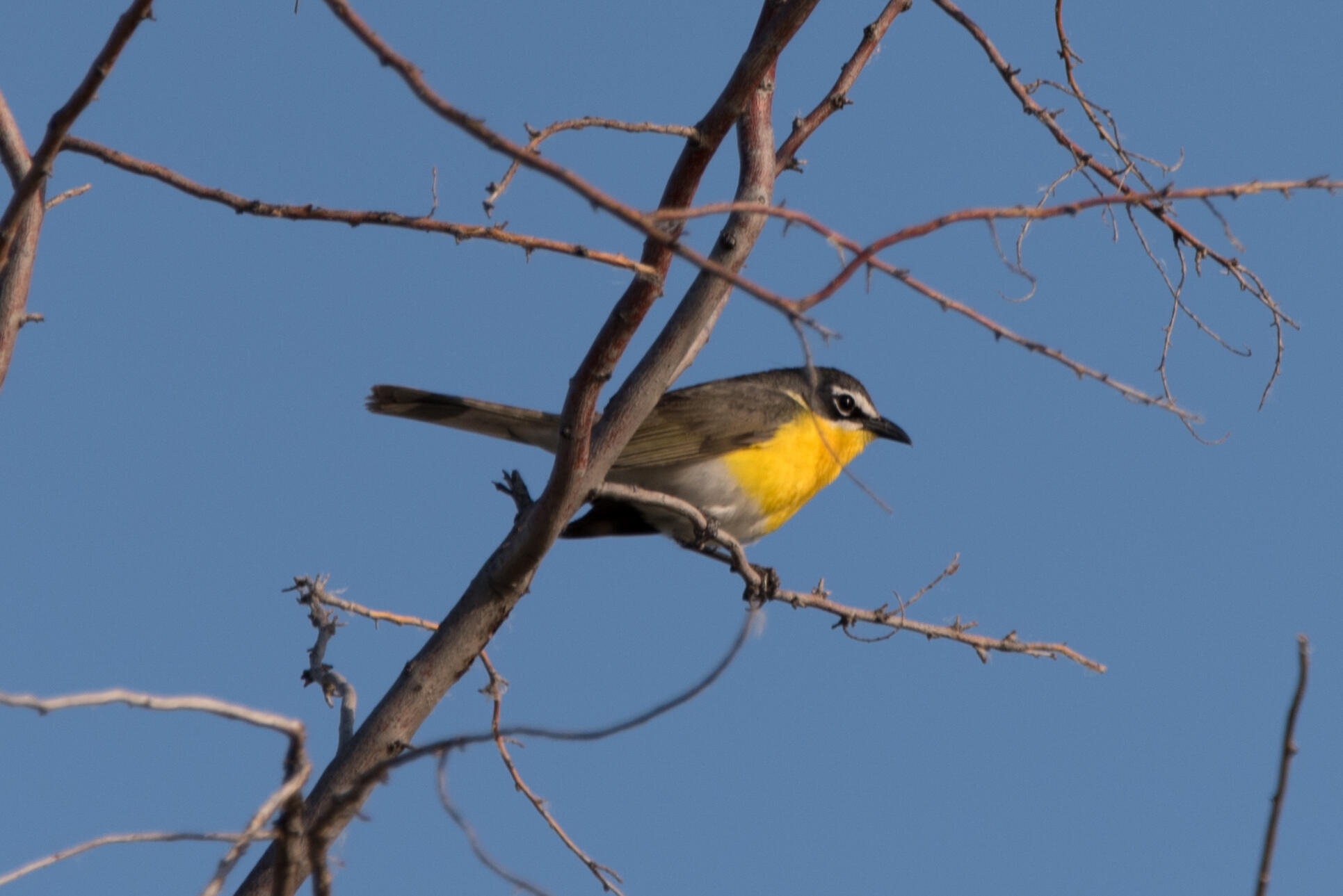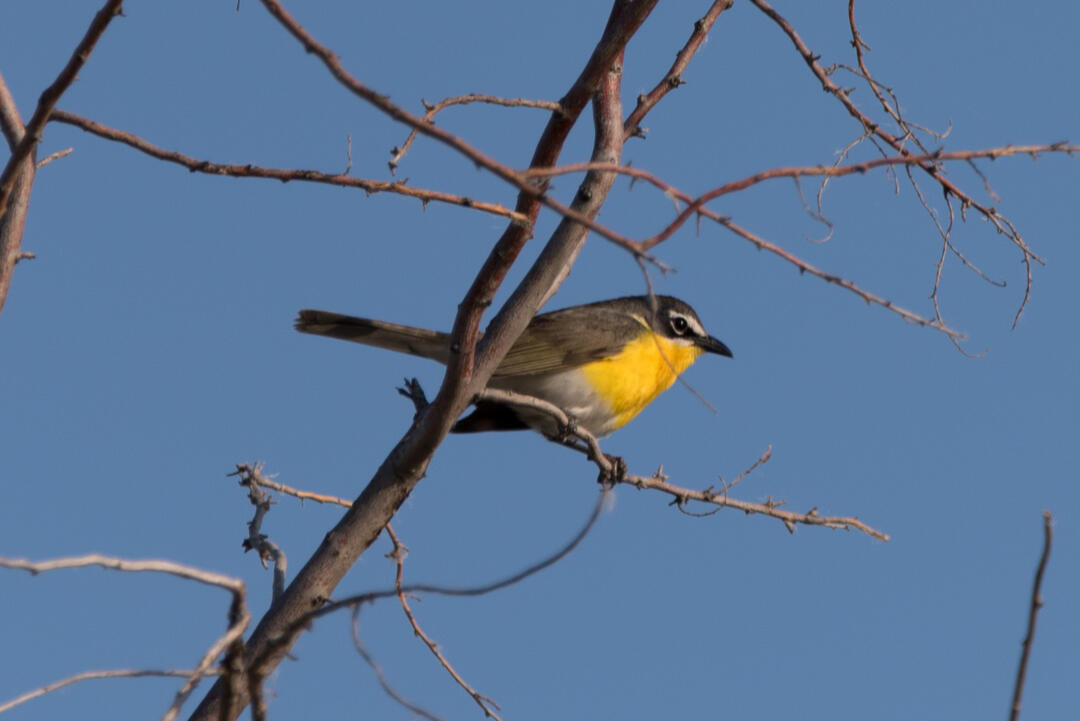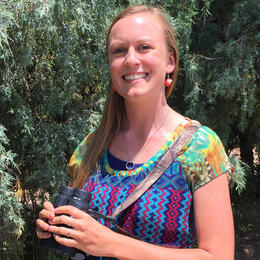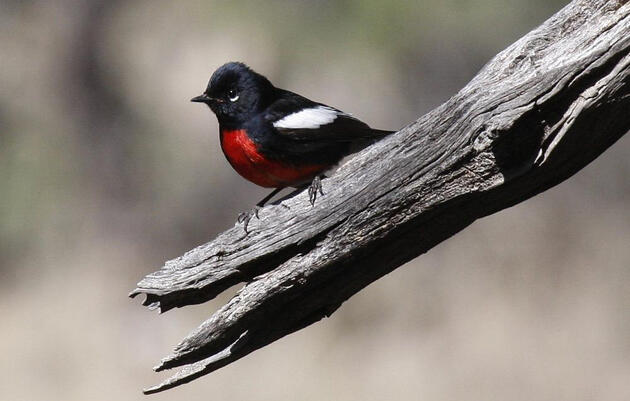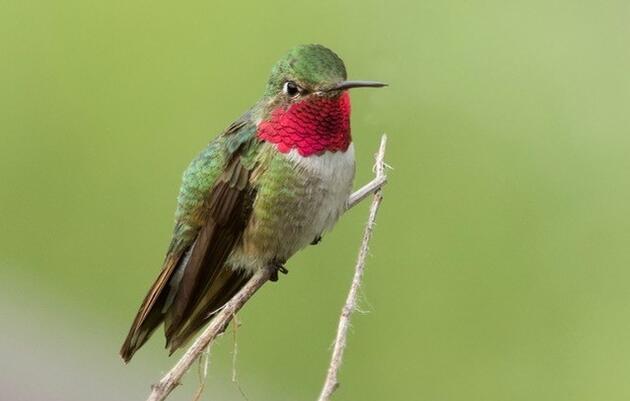Imagine a place where you can see a Summer Tanager, Blue Grosbeak, Yellow-breasted Chat, Bullock’s Oriole, Bell’s Vireo, and numerous other beautiful native bird species all within 10 minutes! I have experienced this at the Socorro riverine parks and bosque trail, which parallels the Rio Grande just outside the small town of Socorro, New Mexico. The bosque trail is a well-maintained easy three-mile walk along the river and winds through one of the most scenic Cottonwood and willow forests in the Middle Rio Grande valley.
The bosque, or riparian forest, is New Mexico’s Ribbon of Life. The Rio Grande flows south from the headwaters in Colorado all the way through New Mexico, providing a green space of native riparian habitat for birds and other wildlife. The river allows cities (including Albuquerque and Las Cruces, the largest in the state) and agriculture to flourish along a narrow strip of floodplain in this otherwise arid state. Much of the Rio Grande bosque has been lost due to water diversions and other human land-use changes, and native species are threatened by the encroachment of invasive Saltcedar and Russian Olive trees. Still, the bosque is very much alive in Socorro County and in other places along the Rio Grande, and the bosque provides high-quality habitat for many native birds. You might get lucky and catch a glimpse of the endangered Southwestern Willow-flycatcher or threatened Yellow-billed Cuckoo if you visit the Socorro bosque.
Along the shady Bosque Trail are a series of small public parks with concrete picnic tables where you can take a break to peruse your field guide or just hang out and enjoy the bird songs. This bosque is owned by the Middle Rio Grande Conservancy District, and the trails and parks are maintained by the Save Our Bosque Task Force. Here is their website which includes directions to the trailhead. SOBTF is a local nonprofit that focuses on riparian habitat restoration and community outreach. Other nearby attractions also offer good birding – the New Mexico Tech campus is a great place to see Black Phoebes and Phainopeplas, or you can head a couple miles south to The Box recreation area and search for Canyon Wrens, Black-throated Sparrows, and other dryland specialists.
I’ll never forget one amazing experience I had at the bosque trail. I was standing near a picnic table with two Save Our Bosque Task Force summer interns. Our plan was to walk the bosque trail and take a quick inventory of the parks to note any repairs that needed to be done or trash picked up. Of course, we all had our binoculars - no trip to the bosque is complete without creating an Ebird list! We heard a commotion in a large New Mexico olive tree less than 10 yards away. A male Summer Tanager was angrily calling and darting in and out of the tree. Suddenly, a Cooper’s Hawk burst out of the foliage with something in his talons and the male Summer Tanager hot on his heels. The hawk landed on a nearby branch and we could see what he was holding – it was a female Summer Tanager! Then we spotted a second Cooper’s Hawk – maybe they were a mated pair hunting together. Both hawks flew away to eat their meal, or perhaps deliver it to a clutch of hungry nestlings. No matter what time of year you visit the bosque, you’re sure to see something interesting.

